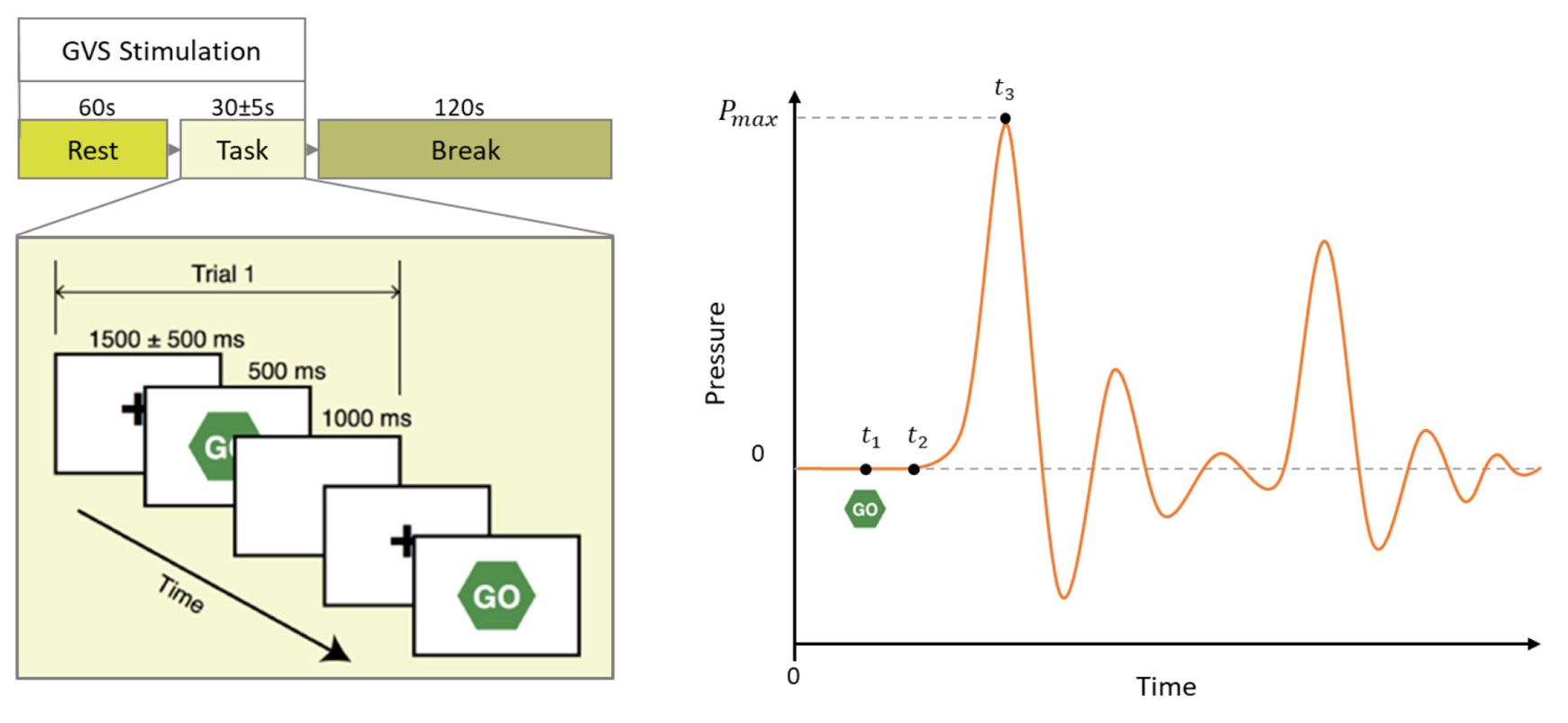Effects of GV stimulation on EEG neuromarkers
One key symptom that appears for a lot of Parkinsonian patients is a lack of reduced (or otherwise impacted) motor vigour. This is an aggregate measure of work being put into a movement (affected by strength, reaction time, etc). One particular way to measure this is by using a force transducer, which measures the force of a grip. We can measure this grip after a timing cue (i.e.: "Squeeze now!"), and how quickly it changes, to get a sense of how much vigour someone is putting into a movement.

Diagram of how we measure motor vigour after a 'GO' signal, as Pmax /(t3 - t2). Reaction time can be calculated as (t2 - t1).
Electroencephalography (EEG) is a method of measuring the electrical activity of the brain. It's non-invasive, and can be used to measure the brain's response to different stimuli. It produces multi-channel time series data. It provides a lot of useful information about the brain: such as the strength of different frequency bands (alpha, beta, gamma, etc.), and what area of the brain is active at a given time.
One way we can analyze this data is by using a Long Short-Term Memory (LSTM) neural network, which is a type of neural network with a memory component that allows it to remember past states (making it good for time series data).
We found that extracted EEG features were able to predict their motor vigour with 75% accuracy in healthy patients and 81% accuracy in Parkinsonian patients.

Impact of each EEG frequency band on our LSTM's ability to predict motor vigour.
In addition, we interrogated the LSTM and found that the alpha, beta, and gamma frequency bands to be more informative of motor vigour in Parkinson's patients than in healthy controls.